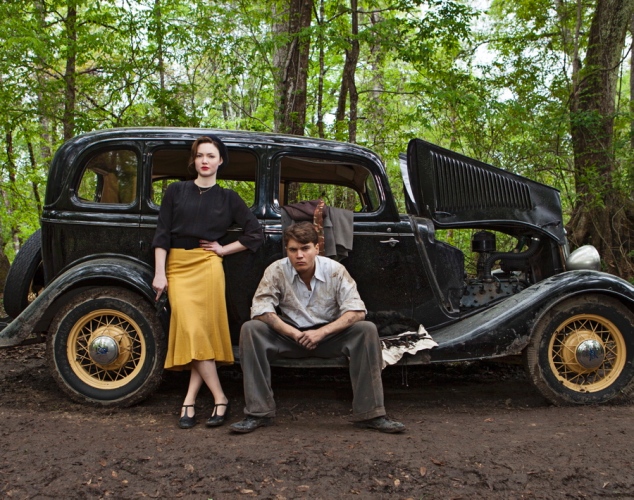Review: 'Bonnie & Clyde'

In a first for A+E Networks, the programmer is simulcasting a project, the four-hour miniseries Bonnie & Clyde, across its three flagship services, Lifetime, History and A&E.
There is something for each of the channel’s audiences. Viewers of Lifetime, which was the original home for the film directed by Bruce Beresford (Driving Miss Daisy) and starring Emile Hirsch (Into the Wild) and Holliday Grainger (Showtime’s The Borgias), should be intrigued by a riff on network themes of a woman striving to leave a mark in the world and finding a companion to make the journey worthwhile. Protagonist Parker realizes her wish fulfillment of enduring fame aided by the man who stands by her side – albeit with various weapons in hand and a coda draped in red.
For History watchers, the event series is factual enough, toggling behind the truth and mythology of the “Public Enemy”- period celebrity couple and their cohorts. Barrow’s early criminal missteps are traced, perhaps a tad too slowly, as is his rape in prison and subsequent escapes aided by Bonnie. The film plays off the legacy of Parker’s gun moll photographs, her proficiency or lack of same with firearms, her callous comments about one of their victim’s head bouncing like a ball, and severe burns on her leg stemming from a car crash with Clyde behind the wheel.
As for the former Arts & Entertainment Network, the project has some artsy, if supernatural, flourishes because Clyde has been blessed with “second sight.” This “gift” affords him uplifting visions of Bonnie in a sunny field before their first encounter and his lover as a ballet dancer. But there are darker visages of a white rabbit staring at his bulleted body in a bathtub, and hails of gunfire.
Indeed, there’s plenty of shoot-em up action along their robbery rides inside and outside of state lines and brushes with the “laws,” plus enough sexual simulation to elicit basic-cable titillation that Grainger left less to the imagination in some of her scenes as Lucrezia on the premium channel’s Renaissance-era papal drama.
Hirsch balances the bloodshed with Barrow’s more realistic appraisal of life on the run, one that sours as Grainger’s Parker escalates her taste for the thrills and kills.
As for the broad supporting cast, William Hurt portrays Frank Hamer as a laconic former Texas Ranger, whose anger explodes when his posse misses taking out the Barrow gang in a bungalow and his contempt seethes in his dealings with P.J. Lane (Elizabeth Reaser, The Good Wife). Looking to advance her career in the hard-to-break through women’s world of 1930s journalism, Lane attains success by romanticizing the tale of the lovers’ larcenous larks, before a holiday killing turns the reporter -- and the rest of the nation -- against Bonnie and her boy. Given that she loses her sight and hubby, Barrow’s brother Buck (Lane Garrison, Shooter), in the crossfire, Sarah Hyland (Modern Family) is probably sorry she took her turn with this clan, although her Blanche knows it’s Bonnie, not Clyde, who’s calling the shots.
The smarter way to stay on top of the multichannel video marketplace. Sign up below.
This is not Arthur Penn’s famous theatrical of 46 years ago with Faye Dunaway and Warren Beatty in the title roles. Still, Bonnie & Clyde, especially with a different take on what led to their final, deadly return to Louisiana, certainly qualifies as the adjectival form of the original A&E initialism: entertaining.
